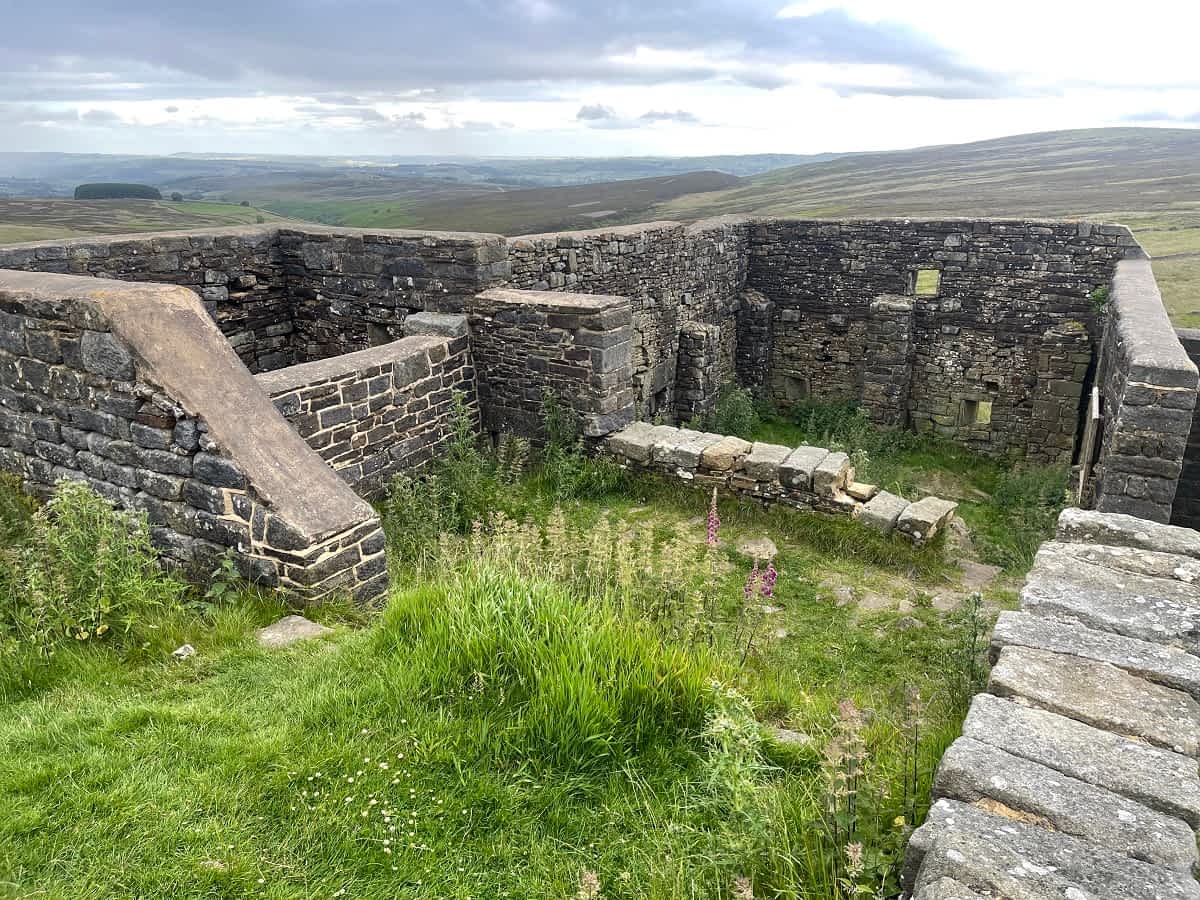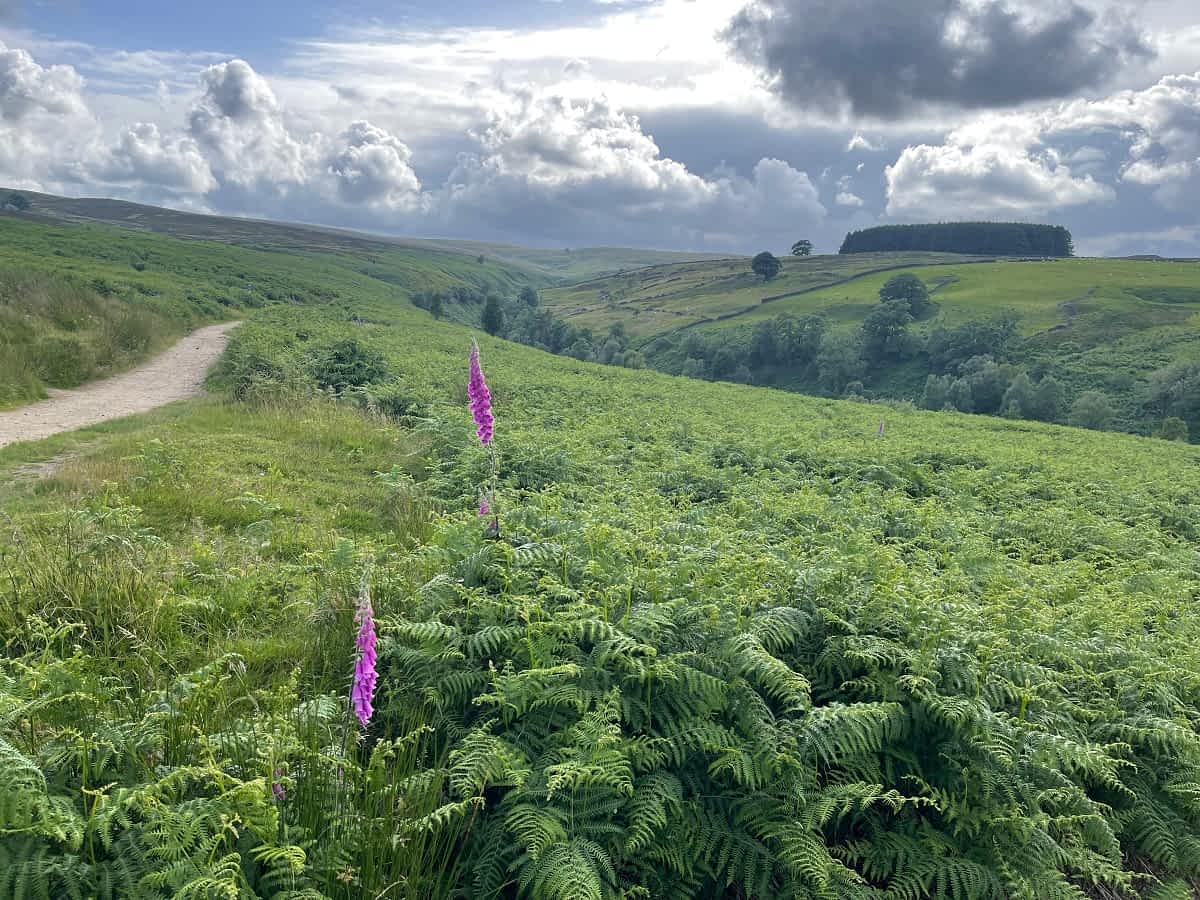Was Top Withens the Inspiration for Wuthering Heights?

It is often thought that Top Withens was the inspiration for the setting of Emily Brontë’s 1847 novel Wuthering Heights. While this may be true, it is clear that the Earnshaw farmhouse in Wuthering Heights did not physically resemble Top Withens.
A stone engraved plaque placed on the wall of the abandoned farmhouse by the Brontë Society in 1964 confirms this.
“The buildings, even when complete, bore no resemblance to the house she described, but the situation may have been in her mind when she wrote of the moorland setting of the Heights.”
A signpost also from the Brontë Society further elaborates:
“Although there are other buildings in the area that fit the description of Heathcliff’s home more closely, Top Withens and the views from it encapsulate the landscape that inspired the Brontës’ writing and continues to be a place of pilgrimage for visitors from all over the world.”
This misconception likely arose from letters sent in 1872 between publisher George Smith and Ellen Nussey, friend of Charlotte Brontë.
Smith wrote to Nussey requesting information about the places which had inspired the Brontë novels. Although Nussey’s letter back to Smith has not survived, a thank you letter from Smith confirms there was indeed a reply.
A subsequent 1873 illustrated edition of Wuthering Heights contained accurate images of Lower and Middle Withens, but artist Wimperis had included a building which represented Heathcliff’s house in place of Top Withens.
So whilst Top Withens itself is unlikely to have been Emily’s idea of the farmhouse in Wuthering Heights, the area and surrounding moorland was very likely a huge inspiration for all three sisters’ literature.

A Brief History of the Withens Farms
The origin of the farm, then known as 'Withens' Farm, as a cultivated land is not exactly known but is believed to be in the 16th century sometime before 1567 as the local population was rapidly increasing.
At the time the property was one single farm and was bought from Thomas Crawshaye and sister Anne by George Bentley of Sowerby in 1567.
In 1591 Bentley left the farm to his three sons Martyn, Luke, and John. It was shared equally between them and split into three farms known as Top, Middle, and Bottom.
A court record exists from 1612 of a ten shilling fine for John Bentley having more cattle than he could maintain in the summer.
John and Joseph Crabtree moved into the farm in 1688 and in 1691 the Bentleys sold their estate to William Midgley, Lord of the Manor of Haworth. There are records of a number of tenants residing there in subsequent decades.
In 1813 the land was owned by John Crabtree (presumably a relative of the previous John Crabtree!) and let to Jonas Sunderland. A valuation record of the property states an area of 17 acres with a value of £14.
The estate passed down through the Sunderland family who made their living as weavers as well as from farming. Jonas Sunderland was still farming the land as Emily Brontë began writing Wuthering Heights between 1845 and 1846.

Emily Brontë's Wuthering Heights was published in 1847 under the pseudonym Ellis Bell.
In 1872, George Smith asked Ellen Nussey about the places that inspired the Brontë novels, resulting in a 1873 illustrated edition of Wuthering Heights where it appears that artist Wimperis inaccurately depicted Top Withens as Heathcliff's house.
In 1903 Top Withens was bought by Keighley Corporation for £750.
Soldier Ernest Roddie returned from the First World War to become tenant of Withens in 1921 despite his name not being on the electoral register until 1926. He reported receiving visitors from as far as America.
In 1930 owing to vandalism the Keighley Corporation demolished Lower and Middle Withens farms but kept Top Withens owing to its history associated with the Brontës. Instead, they opted to block its doors and windows.
The condition of the building continued to deteriorate. Renovation works by artist Ashley Jackson in 1972 and later by Yorkshire Water failed to maintain the building.
Getting to Top Withens
From Haworth

Half of the beauty in visiting Top Withens is the journey itself. Situated out on Haworth Moors, it's not the easiest spot to get to.
The most enjoyable way to visit is, of course, to walk from Haworth village up the public footpath of the South Pennine Moors, passing Brontë Bridge and Brontë waterfall to combine them all in one trip.
The walk up to the waterfall and bridge is fairly simple, albeit with a partly rocky decline close to the waterfall. The walk from the waterfall onward to Top Withens can be quite boggy, so make sure to wear suitable footwear.
The moorland is a 'Site of Special Scientific Interest' as it is home to birds such as curlew, golden plover, peregrine, and merlin, which make nests in the heather and grass. It's also home to a ton of sheep who will give you the occasional glance but largely ignore you!
Returning

Returning to Haworth you can either turn around and walk back the same way you came or alternatively walk back via Stanbury. The distances of both routes are quite similar.
Follow the signpost located just a couple of minutes from the Top Withens site to Stanbury, and then continue along the grit path all the way back to Stanbury. The terrain is straightforward, and with clear signage, it's hard to get lost.
Roughly halfway back you can also take a left to drop down a steeper path to Ponden Reservoir and Ponden Mill, passing The Old Silent Inn on your way back to Haworth.
If there is sufficient interest, I'd be happy to make a pdf with map and images for guidance - send a message via my Instagram page if this is something you'd like to see.
Sources
The Real Wuthering Heights: The Story of The Withins Farms - Steven Wood, Peter Brears
https://editions.covecollective.org/chronologies/publication-wuthering-heights